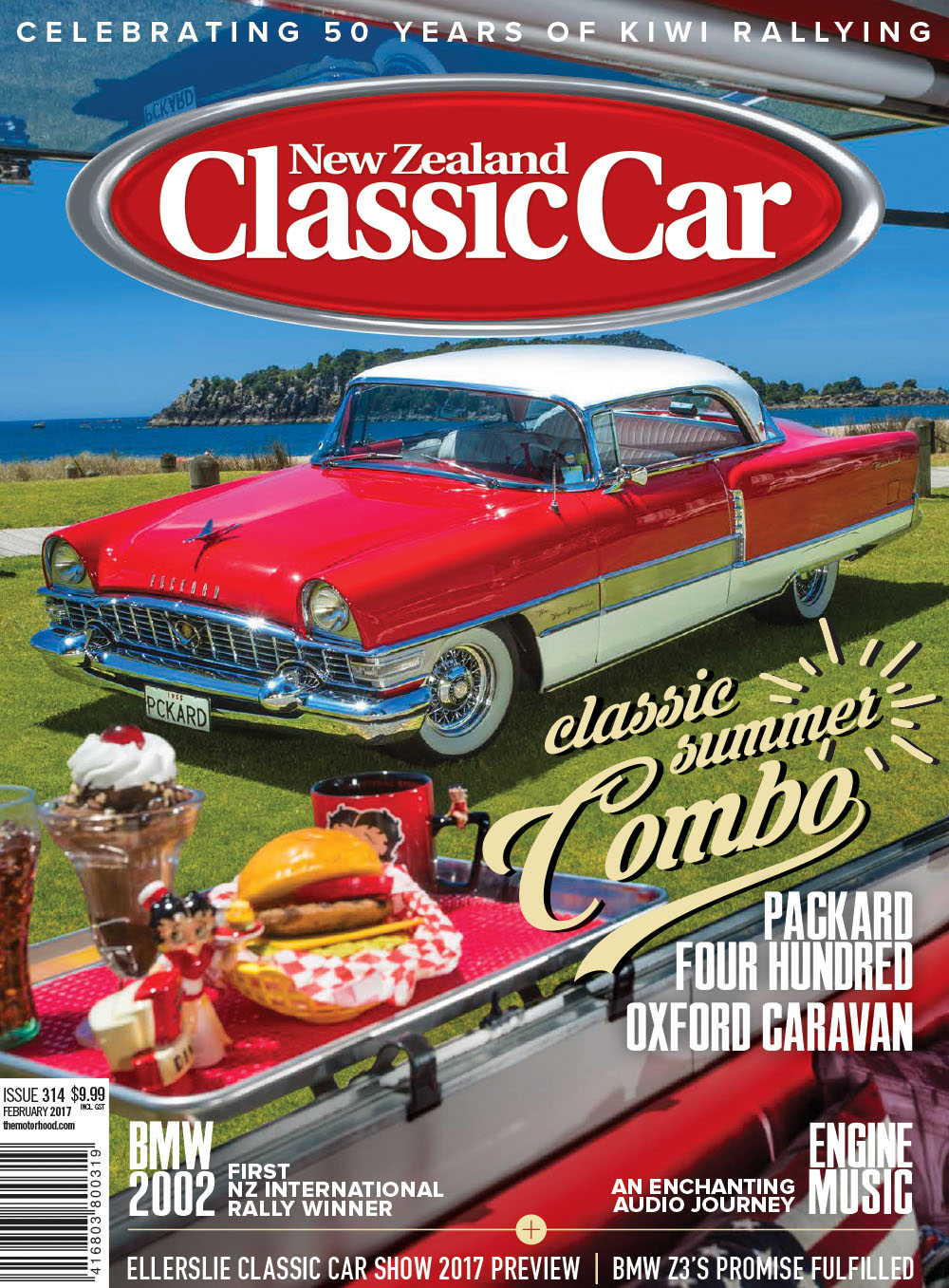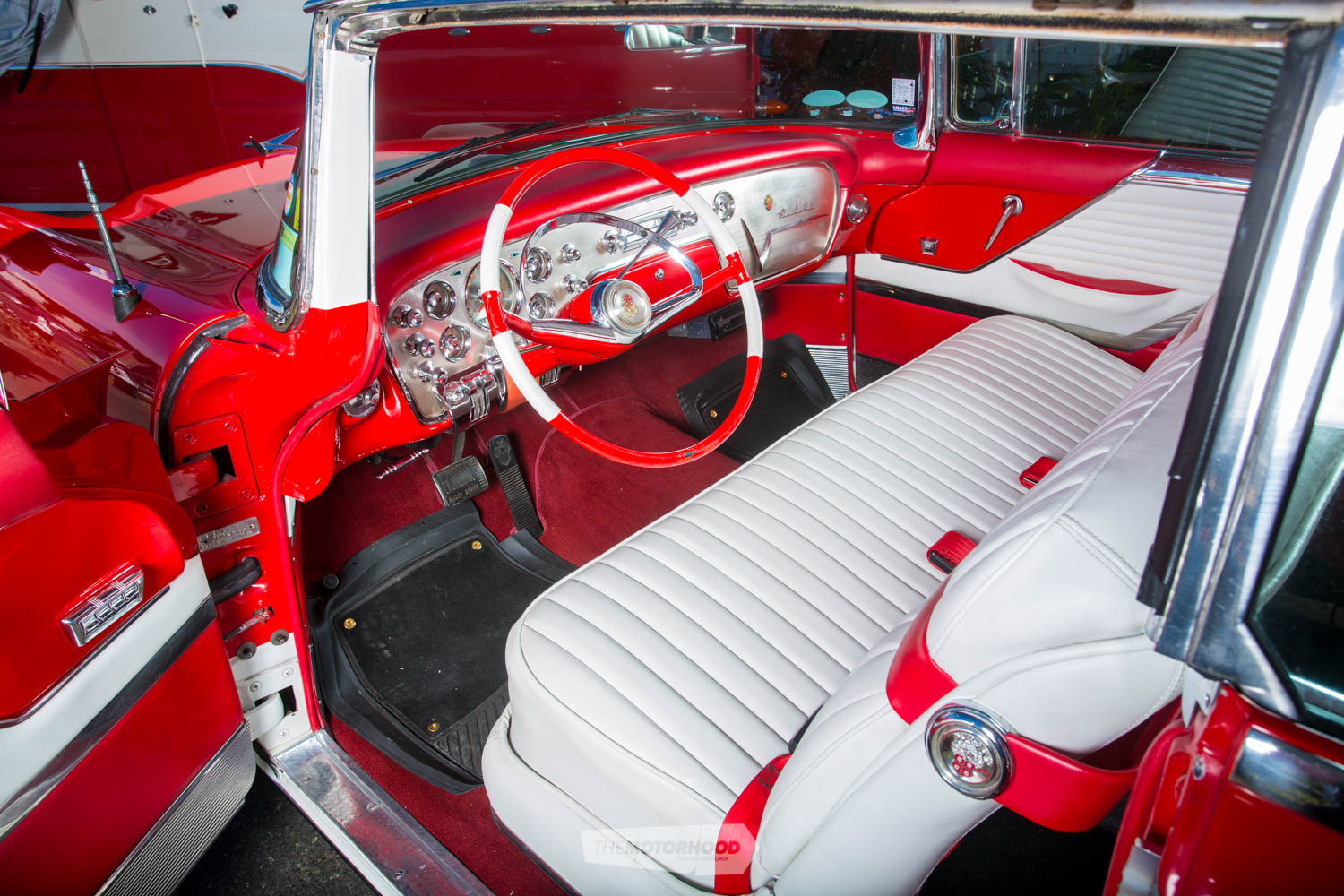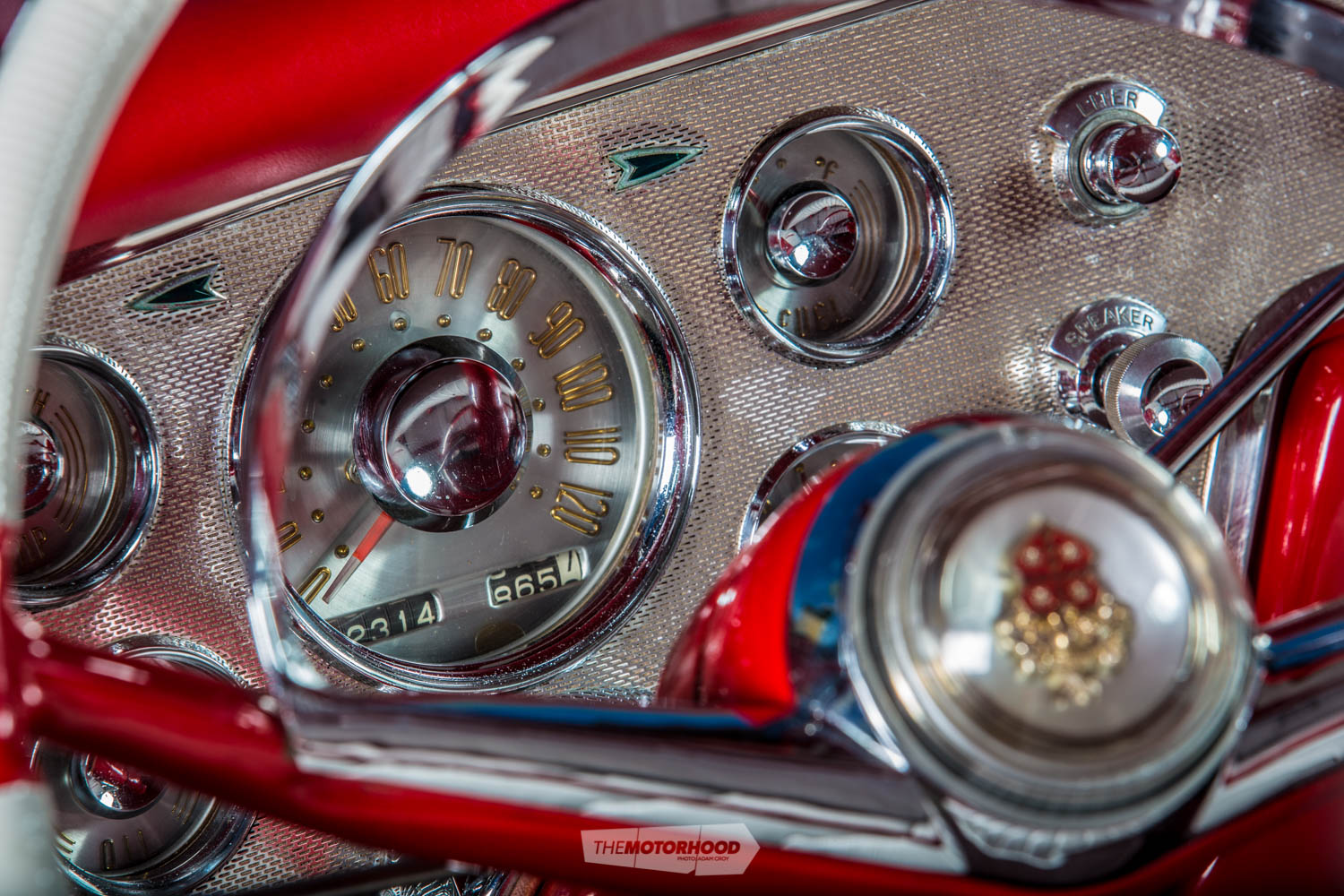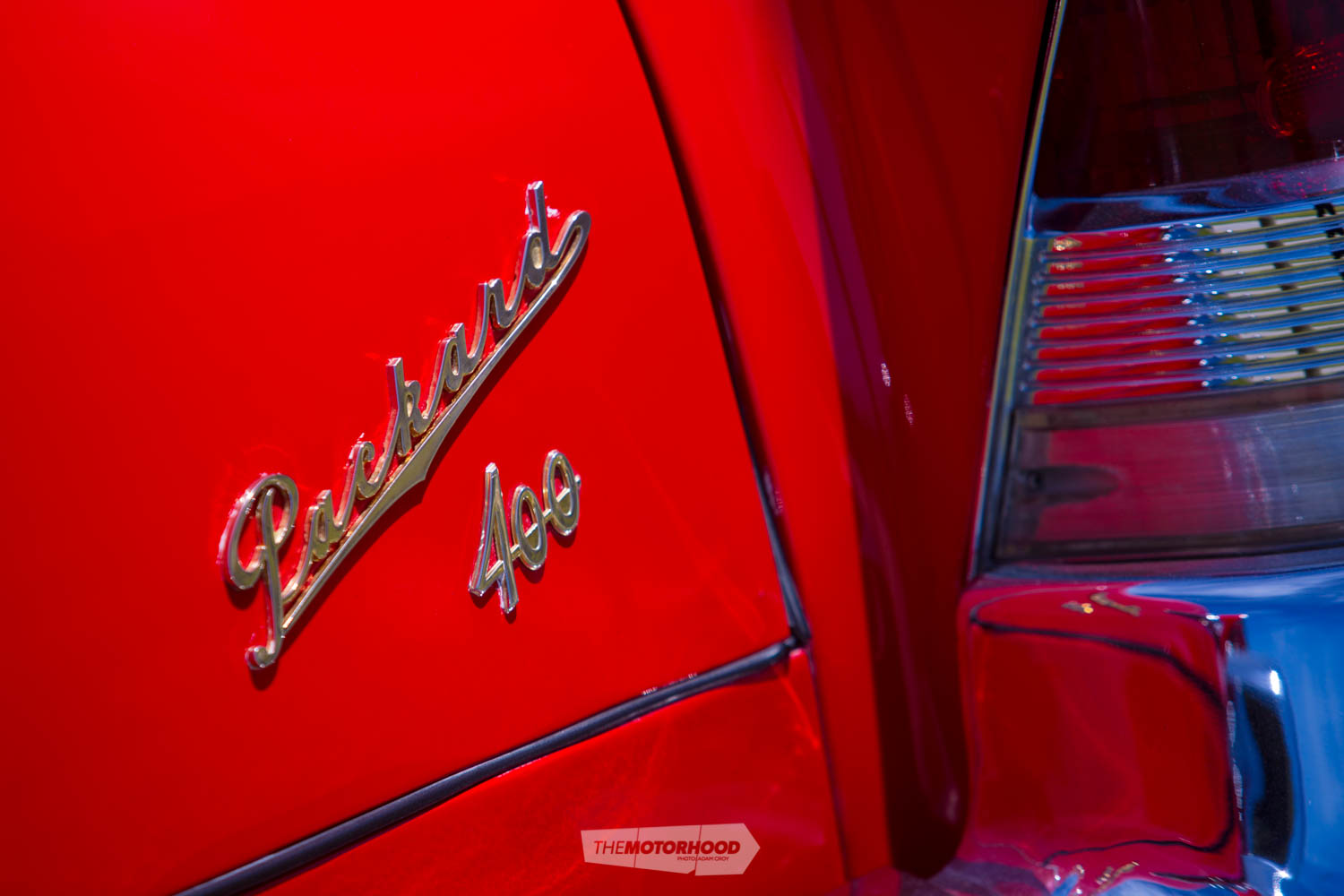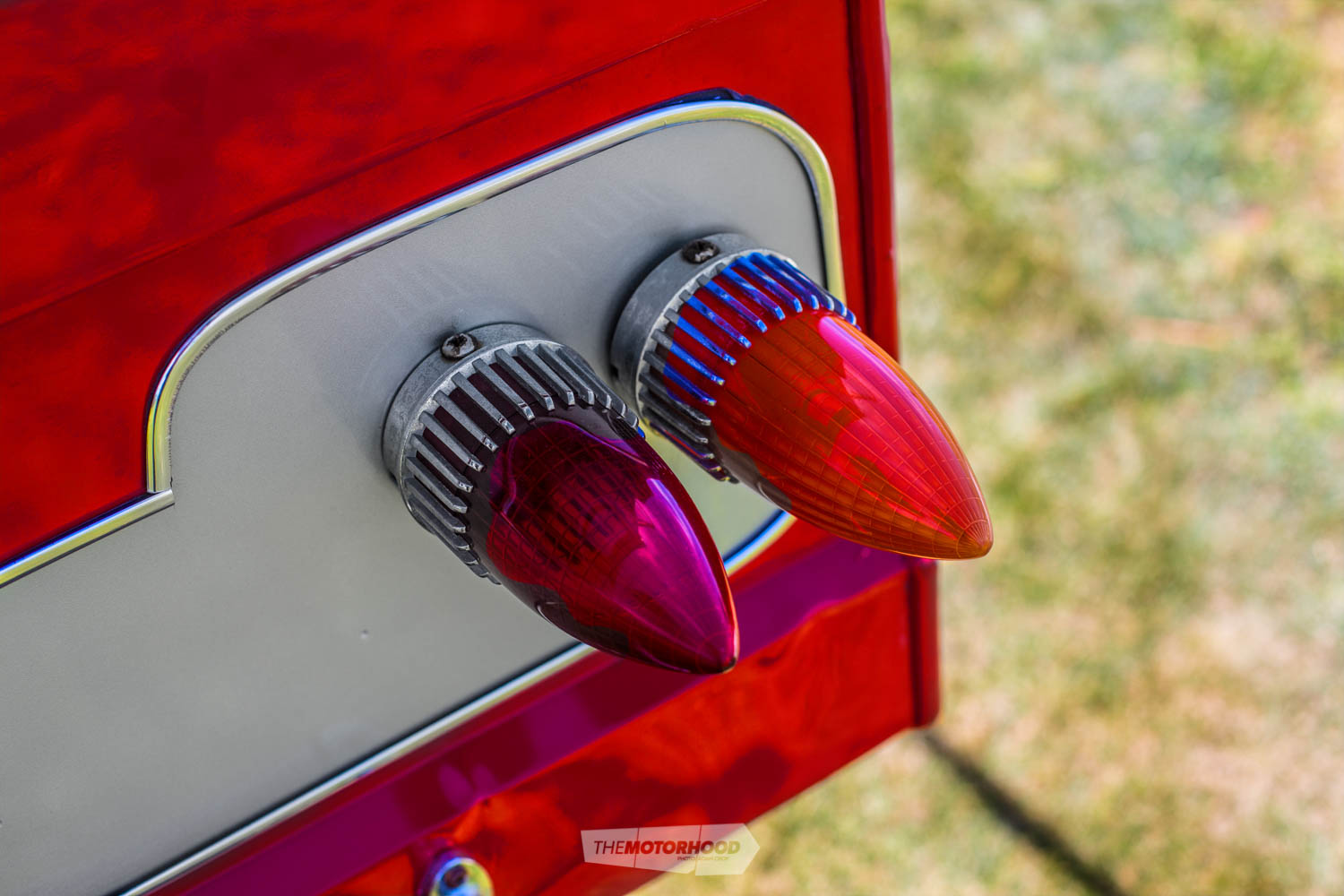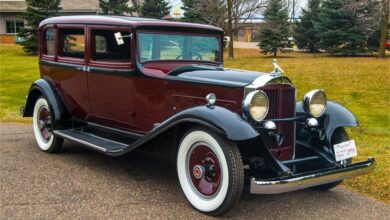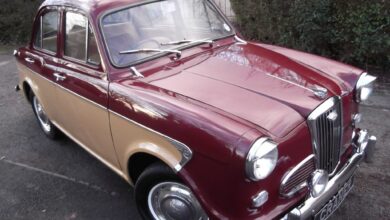Classic Summer Combo: 1955 Packard Four Hundred & Oxford Caravan


Nothing says Kiwi holiday like a caravan — and what better way to pull one than with a classic American cruiser?
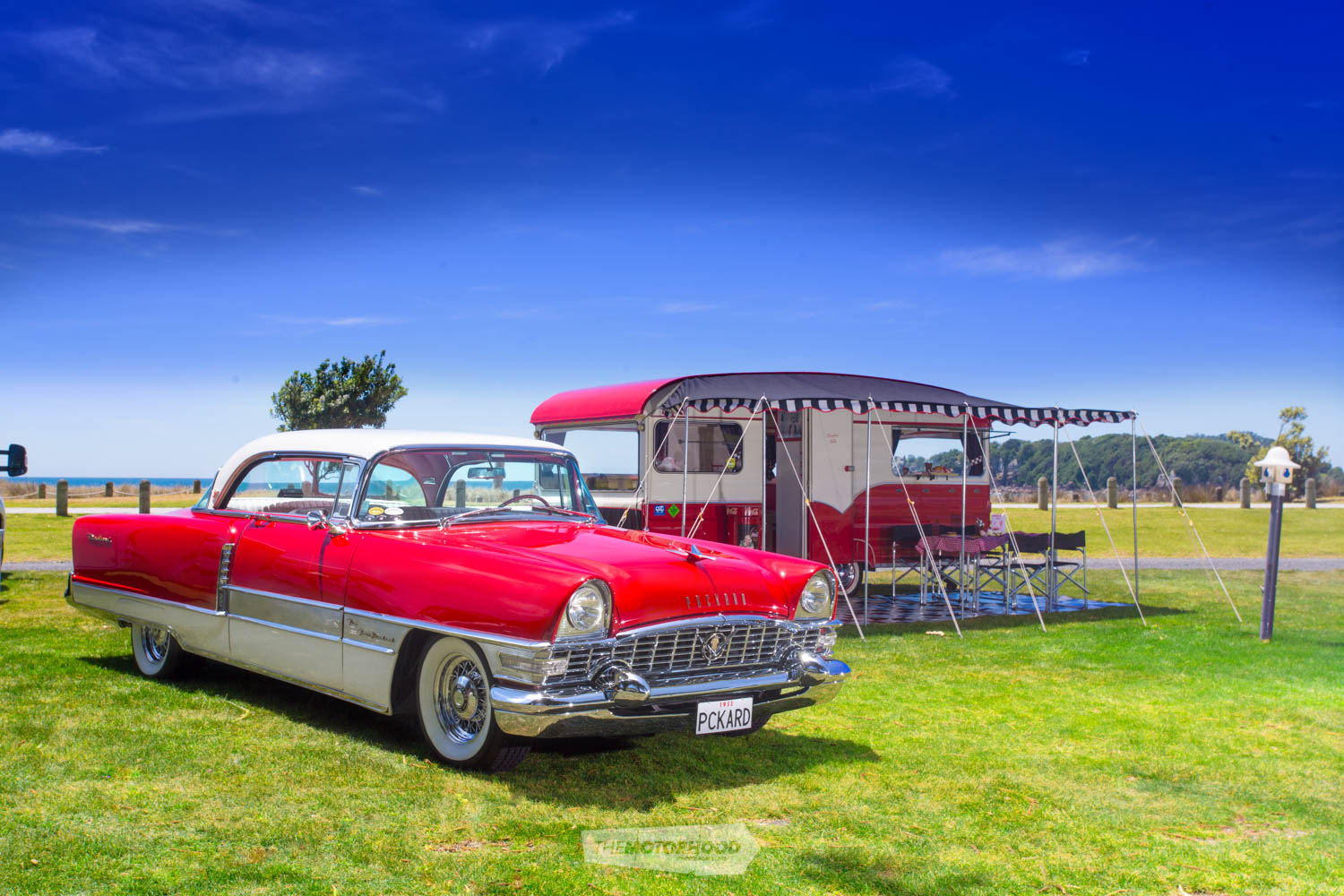
It’s summer, and all across the country, there are queues of traffic crawling out of our cities and towns as holidaymakers head off to their favourite camping destinations, vehicles and caravans packed to the gunwales. Along with mismatched plastic plates and cups and the upturned tinny on the roof, this all used to be as much a part of our holiday experience as a dripping Jelly Tip, black ironsand, and a smoky BBQ. Let’s face it — whether we care to acknowledge it or not, the humble caravan is just as deeply entrenched into the Kiwi holiday psyche as the humble bach, despite the fact that, for many, this way of life has been in rapid decline over the past few decades thanks to the growing trend towards motorhomes.
Indeed, in recent times, the caravan versus motorhome discussion has become a hotly debated issue, partly fuelled by the recent revival and growing popularity of retro-style caravans — a trend that has seen a resurgence of beautifully restored caravans from the ’50s, ’60s, and ’70s appear all over the country.One such is Paula and Craig Jamieson’s featured 1970 Oxford caravan ‘Memphis Belle’, which they tow behind their equally impressive 1955 Packard Four Hundred.

Love at first sight
Paula and Craig Jamieson never set out to own a retro caravan; what they really wanted was a hot rod, but they couldn’t find one that suited them, as each liked a different style of car. Then a few friends started getting into caravanning, so they began looking at them as well. The Jamiesons thought it would offer a way of being involved at events like Beach Hop while they figured out their artistic differences car-wise. Being sensible people, they started a list of the must-haves — toilet (definitely), shower (would be nice), space for the family (absolutely) — and so it went on, until they knew exactly what they were after.
Unimpressed with the styling of the more modern units available, they set their sights on something a bit older, which is when they saw one of Mike Wells’ creations on Trade Me. Craig had spotted it; wasted no time showing Paula; and, boom, it was love at first sight. Originally built for someone else to add to their collection of caravans, it was subsequently put up for sale and naturally attracted a lot of interest. Falling in love, Paula bought it sight unseen based on the photos online. They drove to pick her up the next day and were not disappointed. It had nothing that they had on their must-have list, and yet somehow ticked all the boxes anyway! Now that they had the perfect caravan, it was time to make it their own. Mike had built it with his usual classy style, but, for Paula and Craig, it needed to be a practical working caravan, too.

Caravanning is such a personal thing, and while the retro diner look was pretty cool, it needed a few changes to ensure it was something that could be lived with longer term. Being practical folk, they used it for a bit — OK, pretty much every weekend for the first year — while they decided what worked for them and what didn’t, and made little changes along the way.
In the end, there was nothing major that needed doing other than just a few cosmetic tweaks to suit their tastes. Some seating was removed, and a new double bed was fitted before the flooring came up, and the black-and-white checked lino went down. The wardrobe was converted into a pantry, and a better-sized fridge was installed, so that they could have extended holidays in their new home away from home. Mike had finished the exterior to his usual high standard, with all his trademark touches: flawless panel and paint; just the right amount of chrome and stainless; and, of course, 1959 Cadillac tail lights.
What she didn’t have, though, was an awning, which was a must-have for Paula and Craig, so they had one made in a style to complement the classic lines of the old Oxford. It has transformed the caravan, giving them so much more space. They use it as an outdoor kitchen, and, of course, it provides great shelter from the weather, too. Memphis Belle made quite an impact at last year’s Beach Hop, complete with a few period props, and she drew plenty of attention and offers to buy as well, some for a lot more than what they have invested, but she is definitely a keeper.
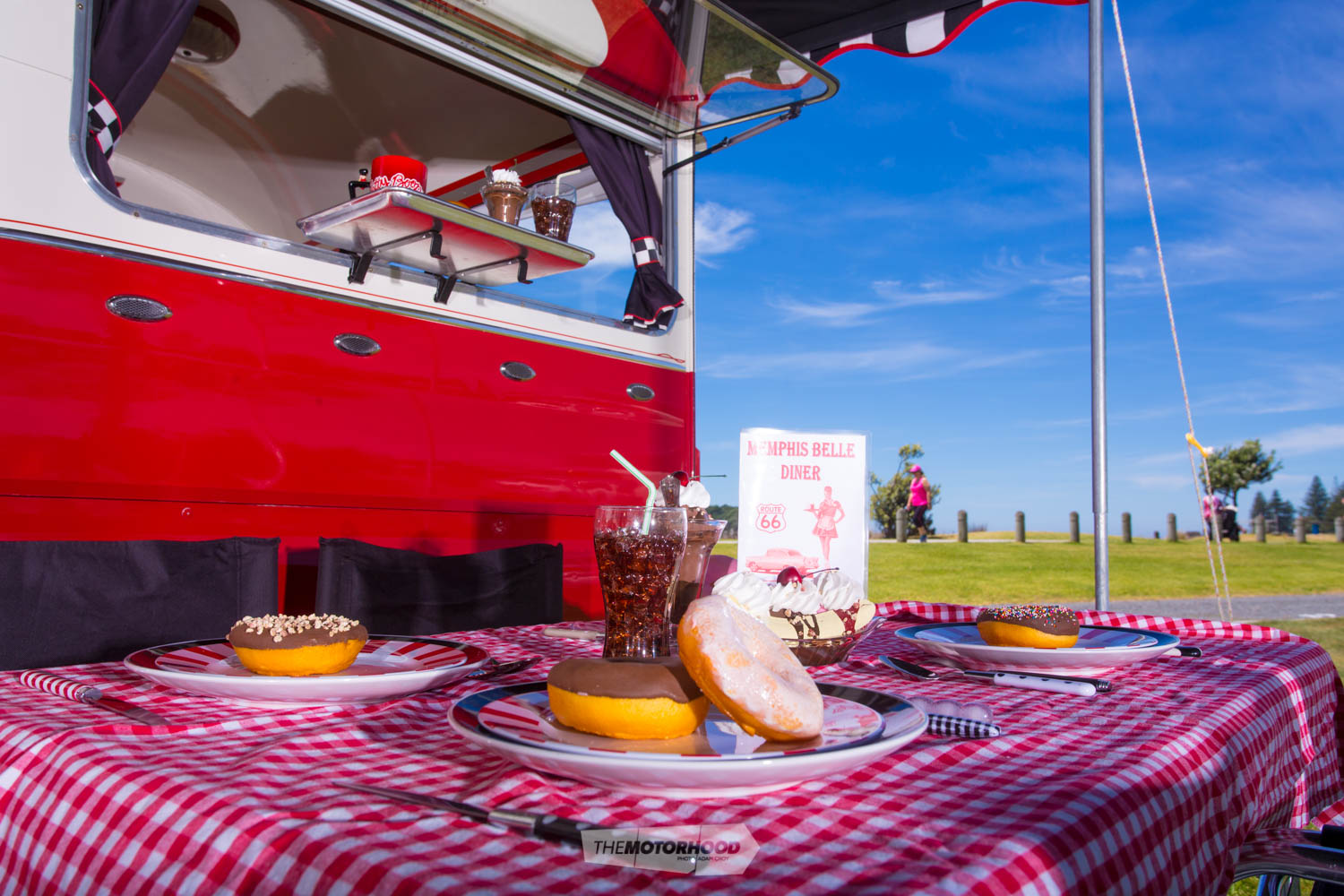
Oxford Caravans
Back in the ’60s, four caravan manufacturers — Oxford, Gipsy, Classic, and Pioneer — called the small Horowhenua town of Levin home. By the mid ’70s, the town was quite literally booming, churning out no fewer than 8500 caravans in 1976 alone and, during the peak of production, earning the region about $30M. However, as the saying goes, all good things must come to an end, and so did the caravan industry, thanks to the Muldoon-led government, which, in 1979, imposed a hefty 20-per-cent sales tax on new caravans and boats. The local caravan industry was decimated virtually overnight. Pioneer’s seven-month waiting list for new caravans evaporated, while Gipsy was able to salvage just two sales from its once-full order book.
Unfortunately, the industry never fully recovered. At its peak, Oxford employed 163 full-time staff and built 25 caravans every week for dealers around the country. But alas, the writing was on the wall as dealers struggled to sell the backlog of new caravans, causing irreparable cash-flow problems for the company, and, in 1972, the financially struggling business was taken over by local carmaker New Zealand Motor Corporation (NZMC). A problem remained, however, as NZMC was experiencing financial difficulties of its own, and, within a year, it had onsold Oxford to Waikato-based company CI Munro, which built the Crusader range of caravans. CI Munro packed up the entire Oxford operation and moved it north to Otorohanga.
Despite all these trials and tribulations, in 2011 Motek (formerly CI Munro) unveiled a new range of Oxford caravans, showcasing a modern twist on the original’s iconic design and style.

Man and Machine
Looking back through automotive history, the Packard had arguably the most legendary beginning of any car. It all started when James Ward Packard, a respected mechanical engineer, purchased a Winton in 1898. Alexander Winton had a reputation for quality-built high-speed cars, but, as luck would have it, the one he sold to Packard must have been a lemon, because, on its first road trip, the new car spluttered, stalled, and finally quit altogether. Packard was not a man to take this lightly, and returned his new car to its builder, which consequently led to a furious argument. At the height of the verbal battle, Winton challenged Packard to build a better car. Packard not only accepted the challenge but also went to work immediately, and, within one year, he and his brother William Doud Packard had started their new company, based in Warren, Ohio. Their first model was a single-cylinder buggy-type vehicle, but much larger engines and advanced stylish body designs followed rapidly.
The business was originally named the ‘Ohio Automobile Company’, but, in 1902, it was renamed the ‘Packard Motor Car Company’ when fresh investors came on board. The Packard brothers were determined to build a quality and dependable car, and proved theirs was by entering their robust machines in various endurance tests, winning many cross-country reliability runs, though their early fame was secured by an all-out racing model named the ‘Gray Wolf’. This machine was a four-cylinder speedster with an aluminium body that appeared in 1904 and set many records, but its greatest triumph was placing fourth in the 1904 Vanderbilt Cup race. Incidentally, the Gray Wolf, in full racing trim, was available in quantity to the public, a policy that made Packard one of the first American car companies to sell a pure racing model.
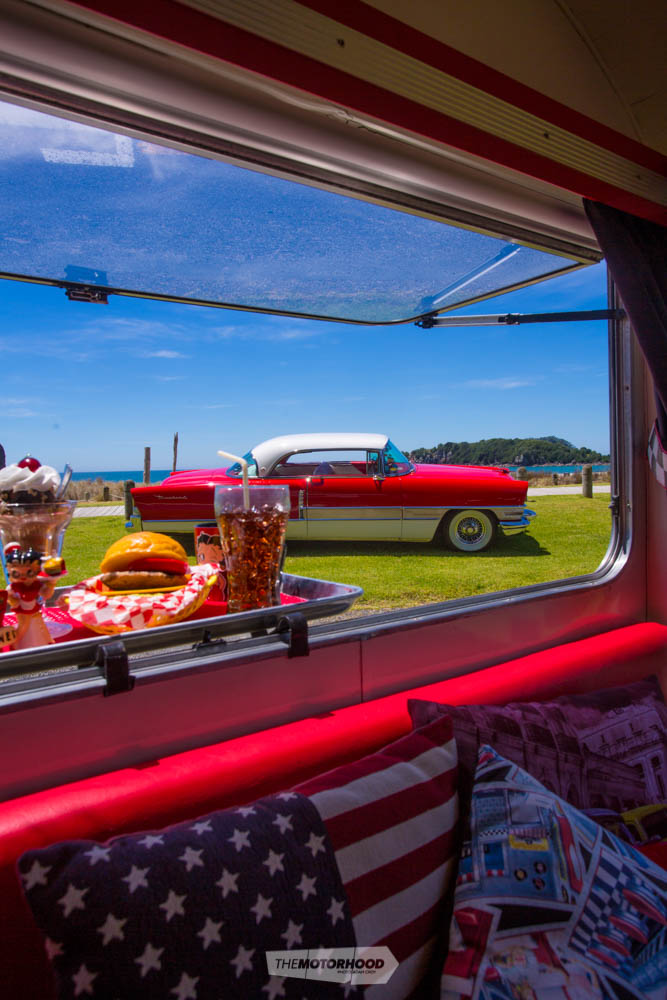
By this time, the Packard brothers–built cars had well and truly surpassed the earlier Wintons, and the challenge was fulfilled. James Ward Packard had undoubtedly built a finer car, but he did not stop there. He continued to develop his large limousines, exciting luxury cars that sold at comparatively high prices. Like Rolls-Royce, the early Packards had a distinctive flat radiator, which slowly evolved into a classic pointed shell. In 1919, a Packard returned the land-speed record to America, the first time since the American 1906 Stanley Steamer had travelled a measured mile quicker than any other earthbound vehicle. With Indianapolis hero Ralph De Palma sitting behind the monstrous 12-cylinder engine, the big disc-wheeled machine sped across the hard sands of Daytona Beach at an impressive 149mph (240kph).
But it was not on Packard’s agenda to continue to pursue speed records. Following this triumph, the Packard Motor Car Company concerted its efforts on building expensive passenger machines and, by the 1930s, was producing some of the finest prestige cars available. The company struggled through the Great Depression, when most luxury car companies such as Duesenberg and Pierce-Arrow failed. Packard’s strategy during the beginning of the period was to raise its models to an even higher status when its competition started to dwindle, which ultimately paid off for the luxury car manufacturer.
Packard released its first six-cylinder engine model, the Packard 110, in 1937. This seemed like perfect timing, but, in actual fact, it damaged its reputation. The six-cylinder car, along with the junior line of models battered the brand’s ‘elite’ status. After World War II, Packard suffered severely by offering body styles that did not go over well with the public and was unfortunately unable to take advantage of the booming market after the war. Nash Motors approached Packard with talks of possibly merging the two companies, but Packard held out. Nash eventually merged with Hudson in 1954 to create American Motors Corporation (AMC). Soon after the Nash and Hudson merger, Packard realized its predicament and needed to do the same. Packard purchased Studebaker, creating the Studebaker-Packard Corporation. Packard had hoped the increased number of dealers would help sell its product but soon discovered that Studebaker was in severe financial strife.
Packard’s sales climbed in 1955 thanks to its design change and first V8 engine — a 5.76-litre (352ci) overhead-valve V8 boasting a four-barrel carburettor. This was a switch from the straight-eight engine of 1954. The new elegant design included a more modern-style grille, hooded headlight housings, and cathedral-styled taillights. The new trim allowed for both two- and three-tone paint schemes, and also made it appear that the car had a new roof line. A completely redesigned wrap-around front windscreen gave the car a more modern appearance, and it looked more like what the competition was producing.
The 1955 Packard also had a few more tricks hiding beneath its stylish new attire, including the Twin Ultramatic automatic transmission — ‘Ultramatic’ was a trademark name for Packard’s transmission — as well as torsion-level suspension, which many at the time felt offered superior handling and an excellent ride. All in all, the 1955 Packard Four Hundred had a very impressive presence. Unfortunately, disastrous engineering woes that year resulted in hundreds of cars having to be repaired at dealerships before they could be sold, making 1956 one of the worst years in sales ever for Packard. Sales would continue to go downhill, and Packard dealers closed around the country. The end of Packard was impending, and the last year of production was 1958.
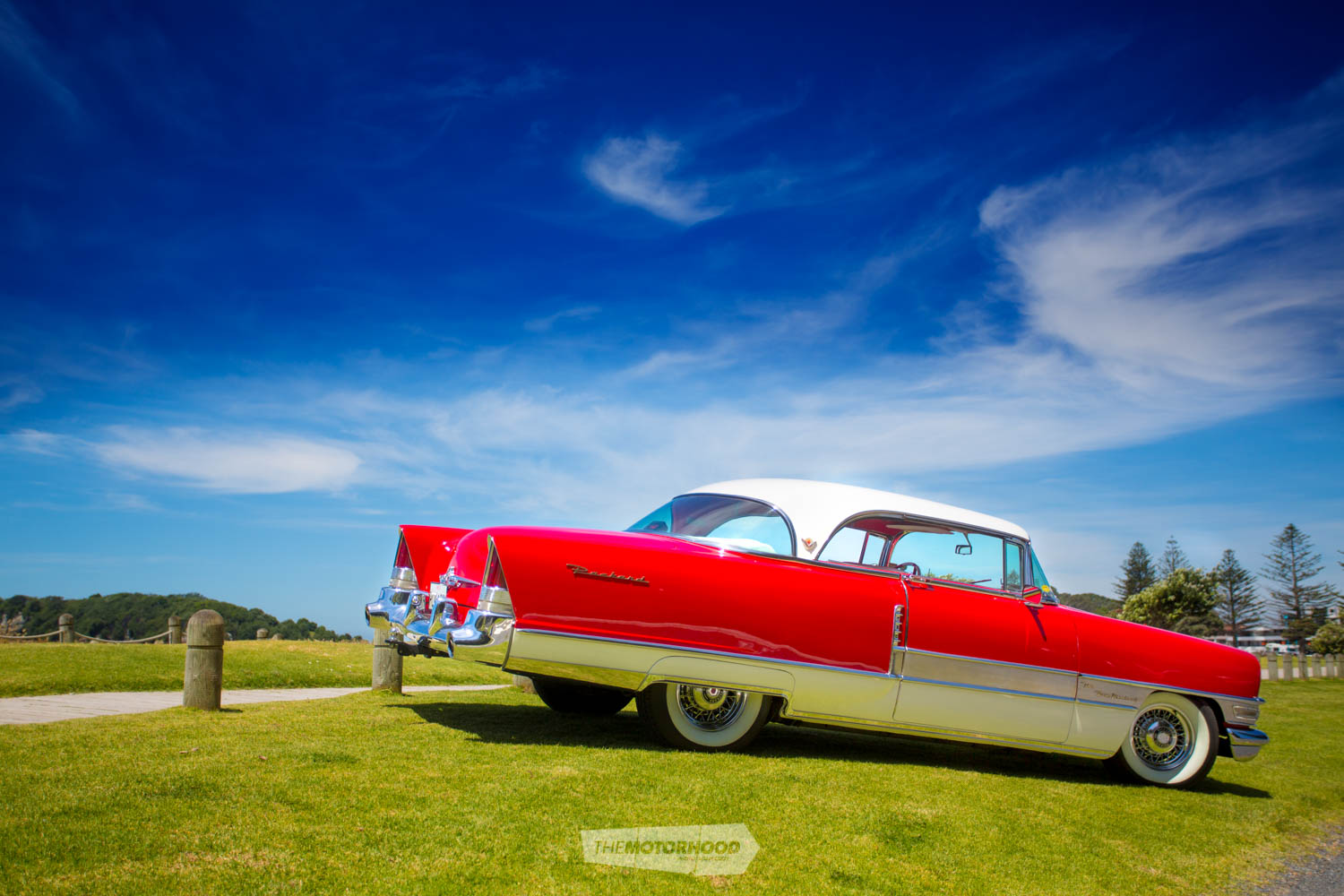
Missing link
What was obvious from Beach Hop last year was that they were still missing something — a suitable tow vehicle for Memphis Belle — and, after a Sunday sushi run, Paula returned with a 1955 Packard, ‘The Four Hundred’, restored by Duffy Hannah from Rotorua. The Packard really is the pièce de résistance, and really makes the combination stand out. Together, the pair are real show-stoppers, and the people at Beach Hop last year obviously thought so, too. Making the top 10 was a real surprise for Paula and Craig, as they never built the caravan to chase trophies; it was bought and rebuilt to suit them as a working, useable caravan.
As they now manage a motel — Blue Haven, Mount Maunganui — they don’t get to use the caravan as often as they’d like, so Beach Hop is the perfect opportunity to share it. The fact that it strikes a chord with so many people is great, and to win the best caravan at Beach Hop 16 was the just the icing on the cake.

1955 Packard Four Hundred
Engine Packard V8
Capacity 5.8 litre
Bore/Stroke 101.6mm/88.9mm
Valves Two per cylinder
Comp. Ratio 8.5:1
Max power 194kW at 4600rpm
Fuel system Single Rochester 4GC carburettor
Transmission Three-speed Ultramatic automatic
Suspension Torsion-level, consisting of two main (long) bars running along each side of the frame, connecting the front wheel to the rear (on the same side), which cause the suspension to pivot, fore to aft, about a virtual centre
Steering Worm-and-roller
Brakes Drum
Dimensions
Overall length 5523mm
Width 1981mm
Height 1582mm
Wheelbase 3226mm
Kerb weight 1930kg
This article was originally featured in NZ Classic Car issue No. 314 — You can purchase a print copy by clicking the cover below
